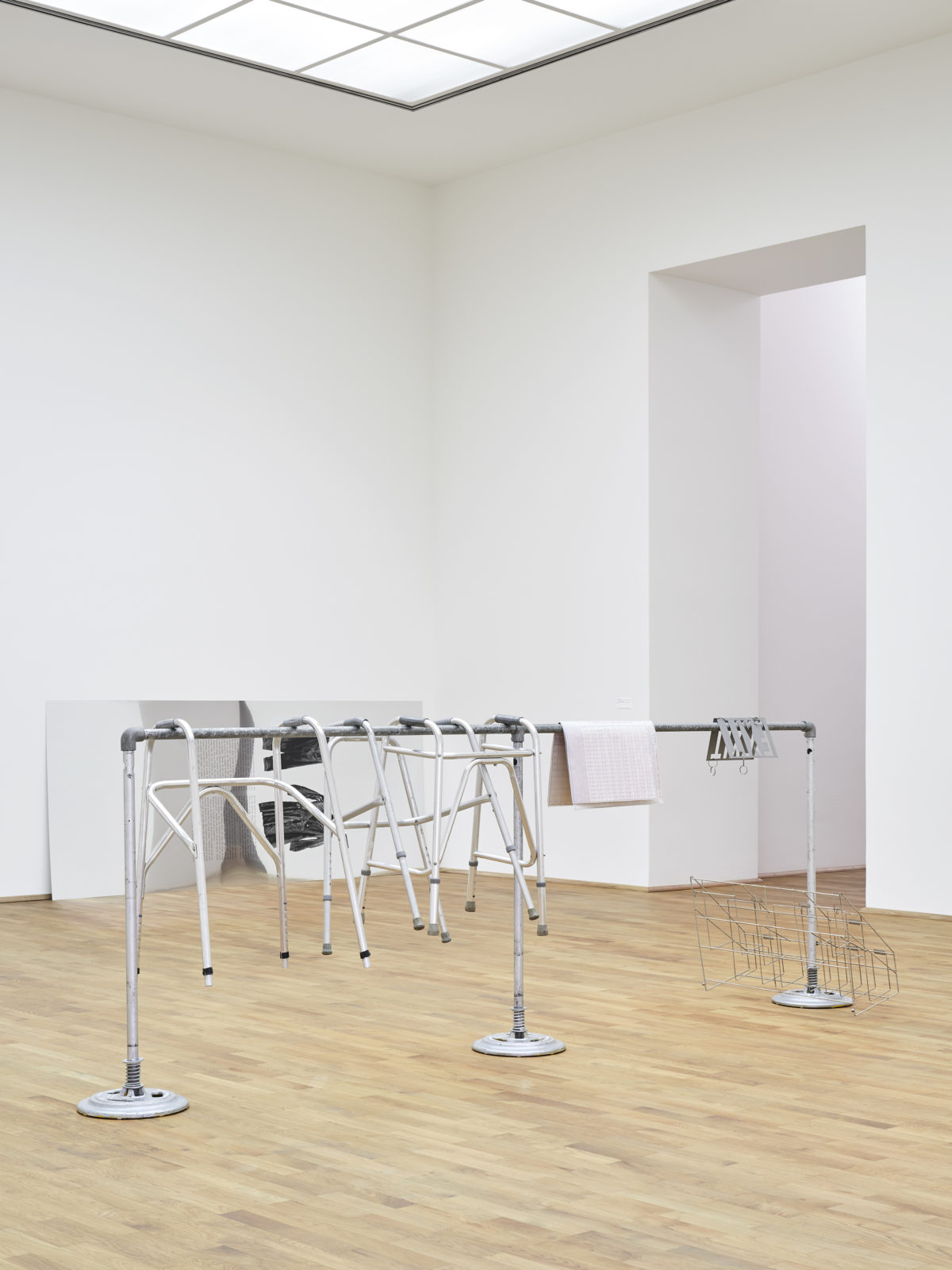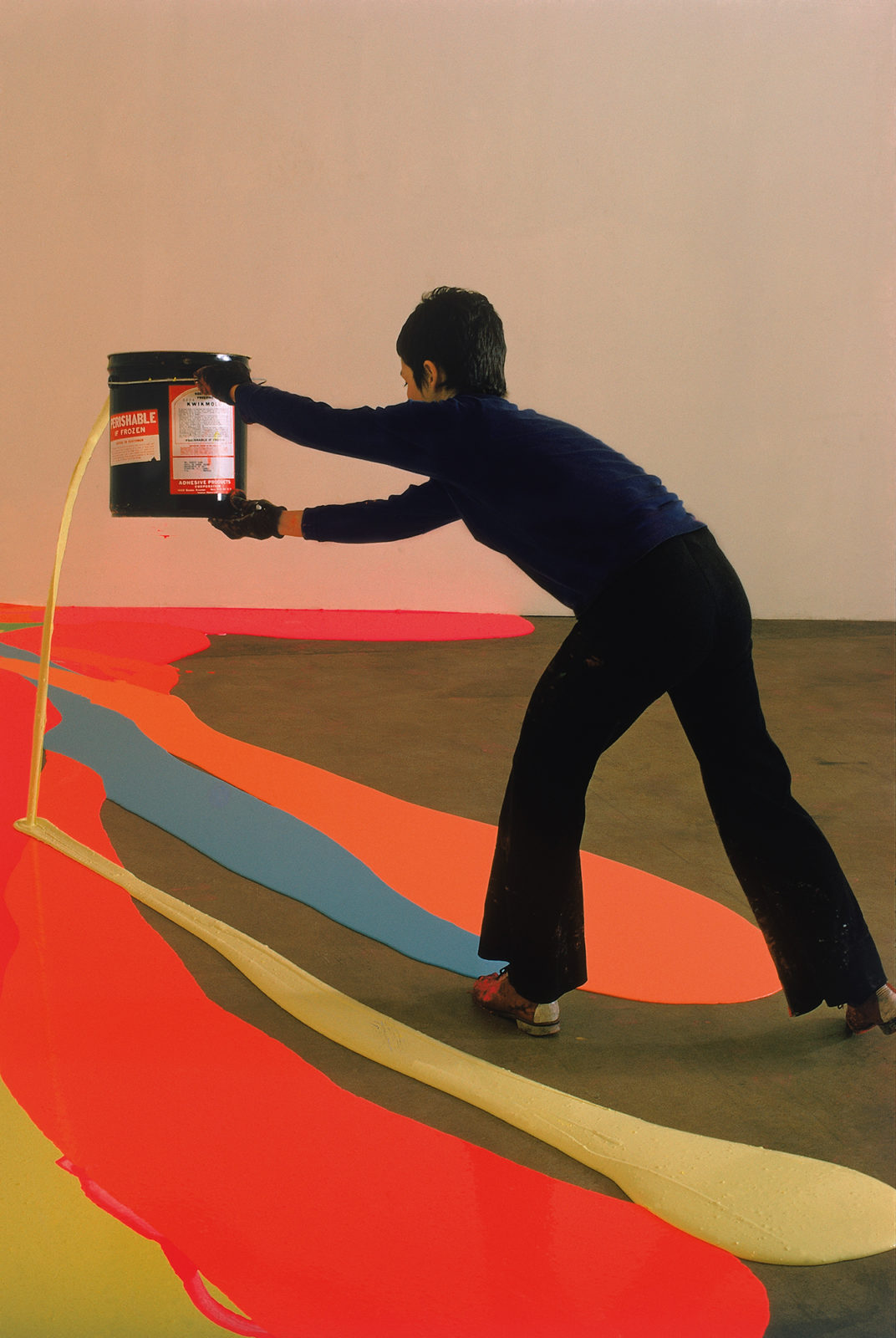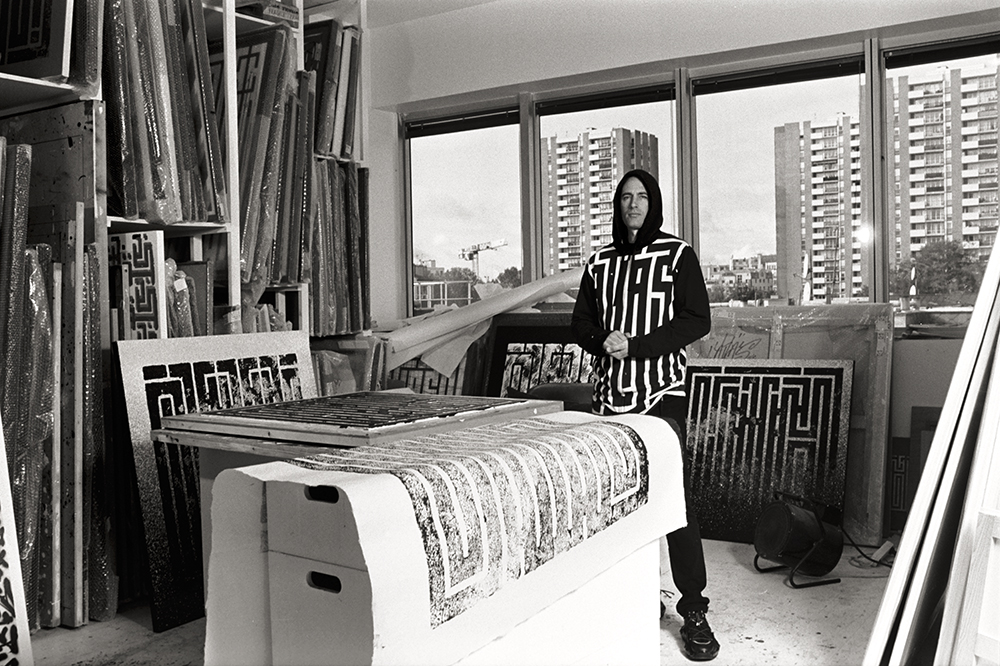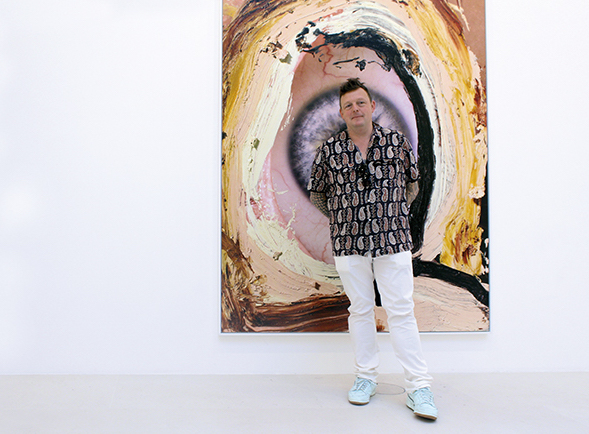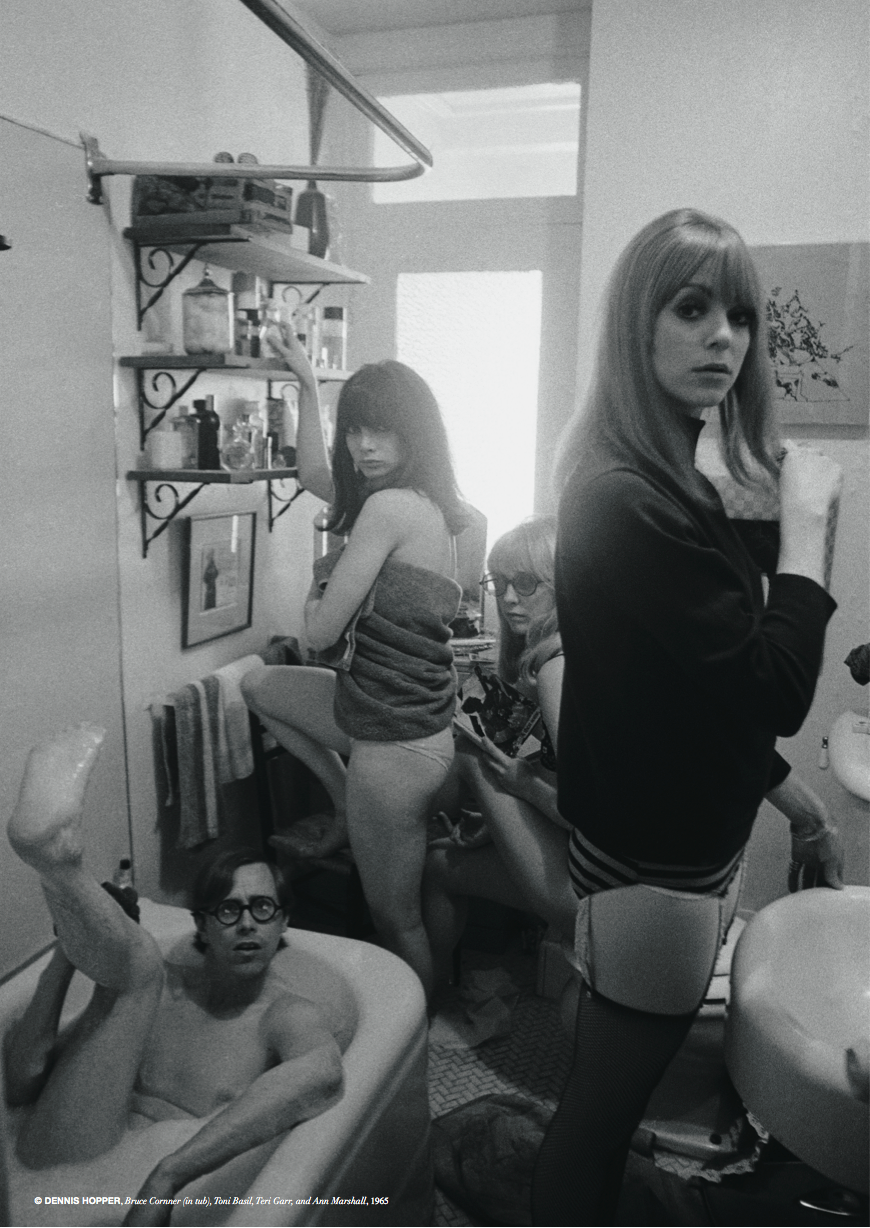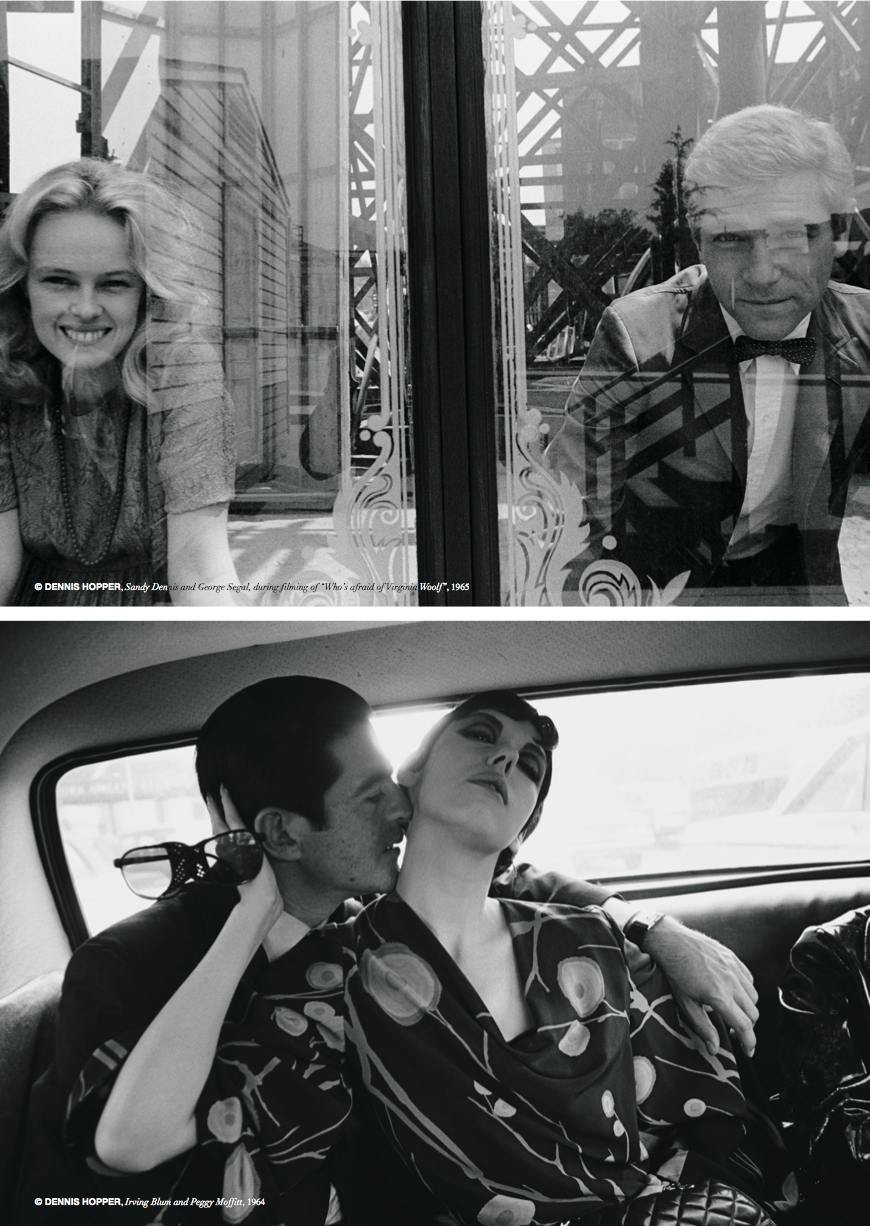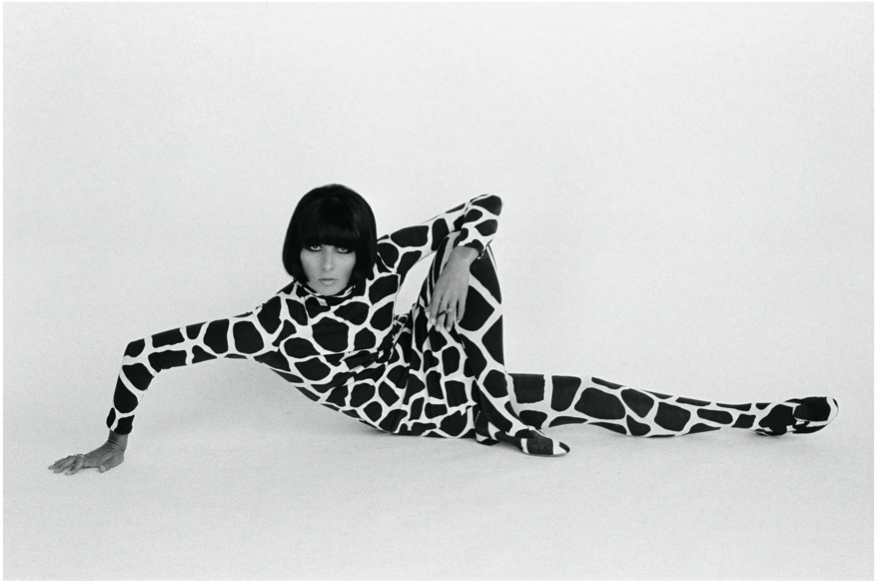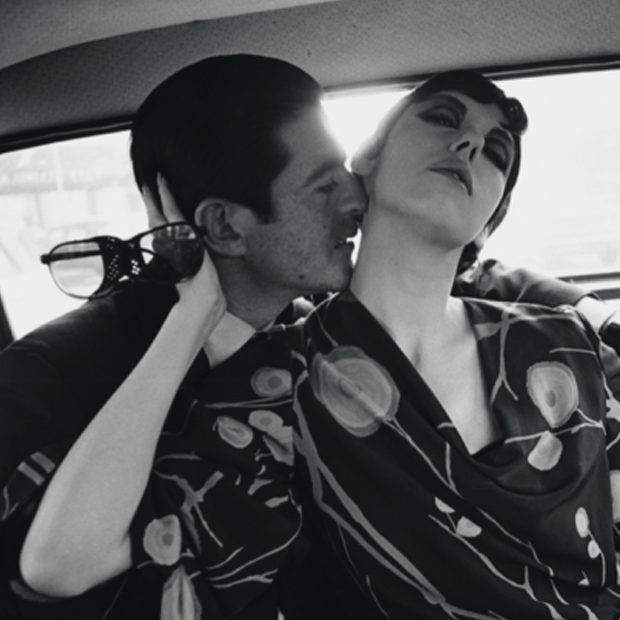
A MEETING BETWEEN DENNIS HOPPER & ARMELLE LETURCQ
By Armelle Leturcq
To instinctively capture the singularity of an instant so that a trace always remains, to project the richness of an era, and to contemplate it years later not with nostalgia, but the satisfaction of having lived well: that’s the motivating force behind Dennis Hopper’s book called Photographs, 1961-1967. The actor, photographer, and painter here delivers a gripping account of a fertile art scene as it bloomed, one that notably saw the birth of pop art. From hollywood film reels to his camera’s negatives, this is the journey of a man whose tale can only be told in images. We met with Hopper in what looks to be one of his last interviews.
The book is incredible… How did your relationship with photography begin?
No one has ever asked me that question! I think it all began when I was about 16; I was working as an apprentice at La Jolla Playhouse, a theater in San Diego that notably put on Gone With the Wind with Gregory Peck, in a way that let Jennifer Jones, his wife at the time, express herself more as an actress. I cleaned the toilets, tidied the lodges, pulled the curtains, took care of sound… My boss had an interior decoration business, so he was in charge of the props. I went around with him to dig up these objects, and we took pictures of them to show the director. That’s probably when I first used a camera. One of the first shots in the book, taken in 1951, is called Protect, and shows the shadow of a man against a wall: that’s my boss. It’s the only old photograph that I’ve kept, the rest were destroyed in 1961. As usual, we were out hunting for props, and he was standing in front of a truck: there were all these shadows against the wall and I said: “don’t move!”
So you started photography even before you were an actor?
In reality, I started as an actor when I was 13 years old, at the Old Globe Theater of San Diego, a Shakespearian theater in Balboa Park. I played there until I was 18, before I got a Warner Bros. contract. Then I shot Rebel Without a Cause and Giant… I was still very young. I was 31 when I did Easy Rider; it’s funny because everyone, when they talk about my career, begins with that movie and forgets all the earlier ones.
And as for photography…
I never let up, especially during this time, from 1961 to 1967. I didn’t really have anything else to do: I had a few problems at the time. My ex-wife had given me a Nikon camera, my first decent piece of equipment. So I started taking her picture. I didn’t keep any of the negatives from before this time, it’s all been lost. My first exhibition took place in 1962; the book begins six years after my beginnings as an actor. Most of the photographs featured in the book have never before been in print. There are over five hundred shots… They’re all memories, like the one of Marcel Duchamp in Hollywood in 1946.
Why was Marcel Duchamp in hollywood at the time?
To escape the war! It wasn’t a bad idea… He couldn’t be killed as easily in Hollywood as in Paris. We met there one time. Walter Hopps organized the first retrospective devoted to Marcel Duchamp’s work, so he gave a dinner for the occasion in 1963. Pop Art hadn’t yet reached New York; it was at the Ferus Gallery in Los Angeles that the first exhibition took place. All that was first in California before it quickly moved to New York, as all the art giants soon moved east.
Then did you first meet the artists of the time in Los Angeles?
No, not exactly. Irving Blum, then associated with Walter Hopps at the Ferus Gallery, spoke of a return to reality in abstract expressionism. Certain artists, who were certainly excellent painters, used the vocabulary of abstract expressionism to focus on lines; but, to me, their work remained too immature, too removed from the return to reality. That’s why I turned to the Ferus Gallery, where Irving said he wanted to show me something and handed me two slides. I cried out: “incredible, it’s the return to reality that everyone’s talking about!” He asked me if I really thought that, and I answered: “absolutely!” He asked me what I was doing the next day, and since I didn’t have any plans, he said: “well, let’s go to New York!” So we went there; that was in 1962, and we met with Henry Geldzahler, who was the head of the Metropolitan Museum of Contemporary Art. He gave us a tour of the museum, and we met Warhol, Rosenquist, Jasper Johns, Rauschenberg, Lichtenstein, Oldenburg… All the big names in Pop Art! Except for Jasper Johns and Rauschenberg, I think, none of them had yet had an exhibition. We visited their studios which were full of masterpieces, and I bought Stinking Sun from Roy Lichtenstein for $110. And two years ago when I was in Paris for an exhibition, I opened the International Herald Tribune and saw my painting, which I had lost. It had just sold at Sotheby’s for $17,830,000! For that price I could have bought a house in southern France! At the time, very few people in California were interested in Pop Art; there wasn’t really an art scene before the 1960s.
Were the photos you took of these artists entirely for personal motivations?
Yes, I hadn’t been hired to take photos, except when I worked for Vogue or Harper’s Bazaar, for example.
At the time, were you more passionate about the art world than Hollywood?
No, I didn’t make a distinction, and took as much pleasure in both worlds. To my knowledge, no actors were really involved in art, except Dean Stockwell, and no one in film typically went to openings. Producers didn’t rush out to exhibitions either; they simply bought impressive paintings from time to time. Vincent Price was the only one to possess an incredible collection of contemporary art. I saw my first Jackson Pollock, and my first abstract works in general, at his place. I had already begun to paint in an abstract way, only I had never seen a single one of these works.
Did you also collect art?
I never had the opportunity until Vincent Price gave me a painting as a gift, telling me: “if you have money one day, I think you’ll collect art, too.” It took me a few years, but I finally reached that point.
Photography wasn’t considered as an art in itself at the time, there was a distinction between art galleries and photography galleries. The situation has since changed…
Indeed; furthermore, Los Angeles was quite behind in the 1960s… I remember someone who had bought a Jackson Pollock in 1963, and someone else asked why he wanted it. “For educational reasons,” he replied, and the other person said: “are you going to educate people in your hallway? Because that will never be shown in a museum… It’s a Communist painting.” A communist painting, Jackson Pollock! Everyone was so paranoid…
Then you returned to your acting career at the end of the 1960s?
In truth, I never really left film, it’s more like film kept its distance from me. Films have always made my life what it was, as an actor, but also as a photographer and painter. So I got more involved in film again, and directed Easy Rider, begun in 1967, filmed in 1968, and released the following year. After the shooting, I stopped taking photos and didn’t really begin again until the late 1980s, probably in 1987. I wasn’t able to act, direct, and still keep my camera with me. Being behind the movie camera also satisfied my need for images.
How did you return to photography?
I went to Japan and saw a Nikon in a storefront. Like an alcoholic, I suddenly bought fifty rolls of 36mm film and started machine gunning everything interesting I found again. I made a little book of the photos. However, I didn’t take a single shot while living in Mexico City or France, which greatly upsets me. It’s really strange. At the time I thought I was going to direct a film, and I don’t know what happened. Everyone around me kept asking: “show us the photos you took in France!”, but I had nothing for them to see… They were stunned. I was living with this magnificent photographer, Catherine Milinaire, who made a few books, including Cheap Chic, Birth, in which she interviewed her friends about giving birth in different countries, and Celebration, which is just extraordinary.
Did you only take photos in black and white?
Yes, only in TRI-X.
How many prints do you make of each photograph?
For the shots in the book, I printed about fifteen each. I’ll probably sell some others, at least a hundred, that didn’t appear in the book and that I’ve never printed before.
Most of your photographs depict men…
Yes, it’s true; I also photographed a lot of women, but the ones I lived with kept finding and destroying the negatives…
Do you focus solely on photography now?
No, I also paint, while in parallel I continue with photography, which I now do using a digital camera. I like it a lot, the difference is incredible. We no longer develop photos in chemical solutions; we pulverize light, it makes me think of watercolor. I had never explored the possibilities of color, so it’s a new terrain that’s opening up for me.
You’re also interested in fashion photography…
I’ve had a few fashion projects, yes; for example, I worked with Rudi Gernreich, an Austrian designer.
Does contemporary art still excite you?
Yes; I don’t visit galleries and museums in Los Angeles as regularly, but I do when I’m in New York. In Los Angeles I’m farther away from these kinds of places since they’re all downtown, and I live by the beach. I exhibit my work at the Tony Shafrazi Gallery in New York, so I go there quite often. However, it’s hard to see things that are really new today. What follows will certainly differ from Pop Art and abstract expressionism; realism is probably making its return, to show us what we forgot to reveal at the time. It makes me think of Brueghel, who was the first to depict individuals and their behaviors; he wasn’t painting simply to make money or for the Church. He described the lifestyle of his fellow beings. I’ve always given great importance to the relationship between art, whether it’s conceptual or not, and the meaning of the time in which it appears. Through artists, we should be able to get an idea of a particular moment. When I look at a conceptual piece, I get an interesting idea, but if it doesn’t go beyond that, then I don’t get anything that can really satisfy me. When I consider the work of some current artists over a certain period of time, I see the first traits of an oeuvre sometimes, but I can’t yet detect the next faces who will mark the discipline.
There’s no real movement in art at the moment, everything seems atomized and there are so many artists! It’s hard to find a work with power amidst the multitude that’s available to us; it’s the same with photography, it’s now accessible to everyone…
It’s true; nevertheless, though every one of us can purchase a camera, not everyone knows how to take a photo. For my part, I was in a unique position, because I wanted to do photography, I was never forced to make a living of it. So my way of doing it was different from someone who’s on a paid mission, who’s filling an order. I chose which artists I was going to photograph because I felt it was going to work, like Jean Tinguely, Niki de Saint Phalle…
Do you still see some of the pop art artists who are still alive?
Yes, but unfortunately there aren’t many left… Jasper Johns, Oldenburg, Rosenquist, and Wesselman are the last ones standing from the era.
When you see all these photos together in your book, do you feel a certain sense of nostalgia?
No, I don’t think about time passing. I only say to myself: “looks like a good time…”.
What is your life philosophy today?
Take care of my own affairs and finish the last hundred meters strong…
If you could give a piece of advice to a young photographer or actor, what would it be?
I’d cite Rainer Maria Rilke, who said that at the calmest moment of your life, you have to ask yourself: if the ability to create was refused you, would it kill you? If you answer this question in the affirmative, you don’t have a choice; if you don’t, then have a wonderful life without making art, support the arts, succeed in another field, but don’t try to be an artist. He also tells us to consider our daily lives. On this point I think of T. S. Eliot, who wrote: “I have measured out my life with coffee spoons.” You have to return to what’s essential, and if you can’t find anything rich there, the poetry of life, you can’t blame life itself, but rather the fact of not being poetic enough to find it. Some people have great ambition, but the way they treat their friends, the way they eat, and how they approach the little moments of daily life is sometimes quite strange…
Interview by Armelle Leturcq.






